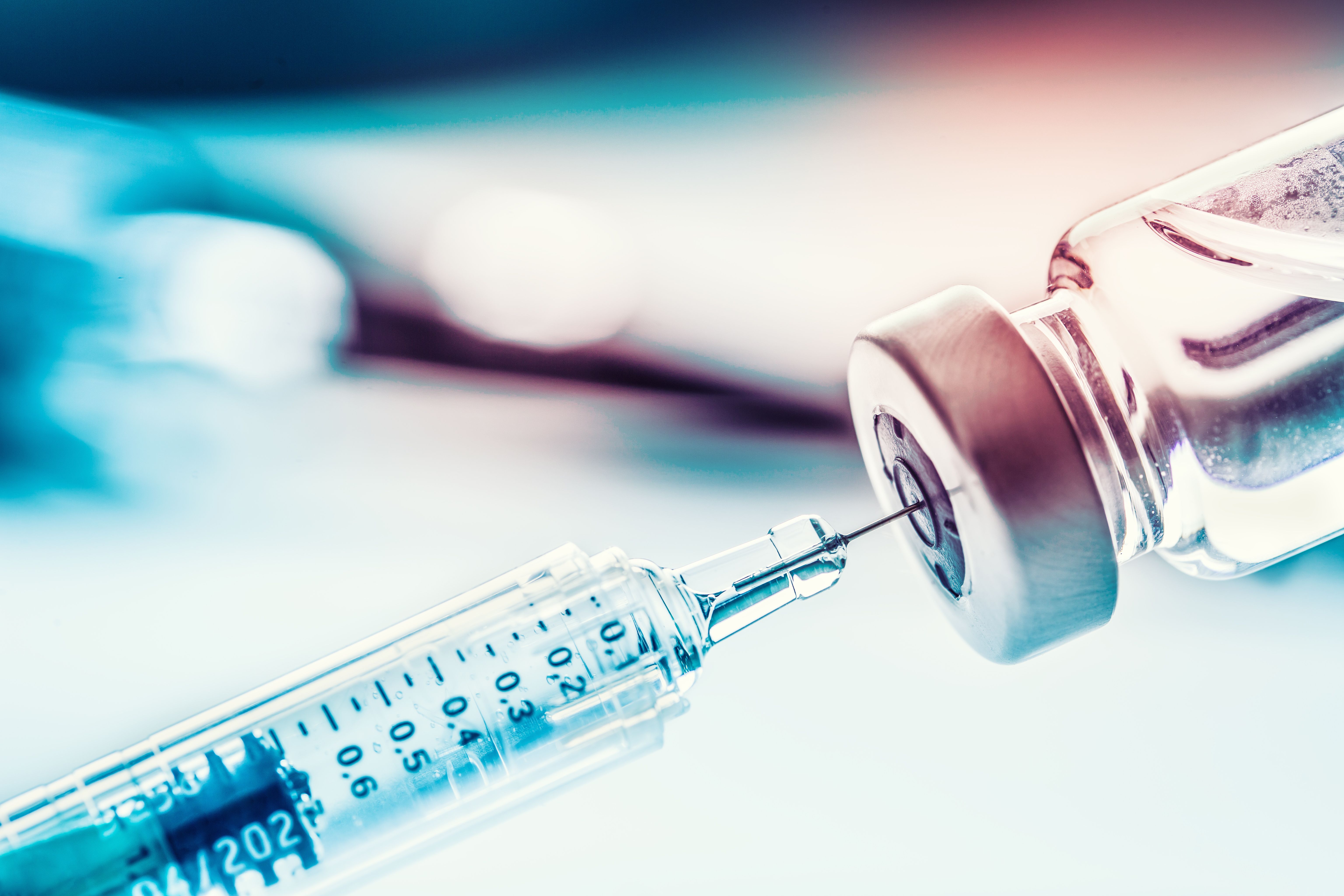- Bone Health
- Immunology
- Hematology
- Respiratory
- Dermatology
- Diabetes
- Gastroenterology
- Neurology
- Oncology
- Ophthalmology
- Rare Disease
- Rheumatology
Filgrastim Biosimilars in Europe: 15 Years of Real-World Evidence for Zarxio
A review looking back at the last 15 years of experience with the first filgrastim biosimilar (Zarxio) provides a detailed overview on how filgrastim biosimilars came to be and the evidence behind why oncologists have come to accept them as standard practice.
A review, published in Critical Reviews in Oncology/Hematology, on the last 15 years of experience with the first filgrastim biosimilar (Zarxio) explored preclinical, clinical, and real-world evidence—as well as cost-effectiveness data—to demonstrate comparable safety and efficacy measures between the biosimilar and reference agent (Neupogen).
Filgrastim products are recombinant human granulocyte colony-stimulating factors that stimulate the proliferation and maturation of neutrophils, facilitating their release into the blood. These products are approved for several indications to reduce the risk of patients developing febrile neutropenia, a life-threatening condition associated with chemotherapy.
There are 3 filgrastim biosimilars approved by the FDA (Zarxio, Nivestym, and Releuko), and 7 approved by the European Medicines Agency (Accofil, filgrastim hexal, Grastofil, Nivestym, Ratiograstim, Tevagrastim, and Zarzio). Additionally, the US has Granix, which was approved prior to the establishment of a biosimilars approval pathway, making it a biosimilar of Neupogen by definition but not by official FDA standards.
A syringe and vial | Image credit: weyo - stock.adobe.com

Zarxio, also known as EP2006, was approved by the European Medicines Agency in 2009 and the FDA in 2015. Zarxio was also the first official biosimilar to receive FDA approval.
Real-World Evidence for EP2006
Multiple real-world studies and meta-analyses have contributed to the growing evidence supporting the efficacy and tolerability of EP2006 in patients with cancer undergoing chemotherapy. Findings from MONITOR-GCSF, an international observational study, demonstrated comparable effectiveness and safety outcomes to the reference medicine in patients receiving EP2006 prophylaxis, even with instances of under- or overprophylaxis. The analysis suggested potential benefits in overprophylaxis for reducing chemotherapy-induced complications. Additionally, a comparison between the PIONEER trial and a study on real-world settings (MONITOR-GCSF) revealed similar frequencies of febrile neutropenia, but higher adverse event rates were observed in the PIONEER study, likely due to study design differences.
Sub-analyses within MONITOR-GCSF highlighted consistent efficacy and safety of EP2006 across patient demographics and prophylaxis timing. Further, real-world studies in France and Italy confirmed EP2006's effectiveness in preventing febrile neutropenia and maintaining chemotherapy dose intensity.
A retrospective analysis comparing EP2006 with reference filgrastim and other biosimilars revealed similar efficacy but noted some differences in adverse event profiles. Moreover, real-world evidence in hematopoietic stem cell mobilization showcased EP2006's effectiveness and safety, matching or exceeding reference filgrastim in various patient populations across different countries. These findings support the expected effectiveness and safety of EP2006 in both cancer treatment and stem cell mobilization contexts.
Cost-Effectiveness Analyses
The researchers evaluated the impact EP2006 had on markets in New Zealand, Italy, the US, Saudia Arabia, Austria, France, and Germany.
A study from New Zealand revealed that since EP2006 launched in 2012, the country saved NZ$5 million (about US$3 million) by 2014 due to price competition. At the time, utilization of filgrastim increased by 25%.
In Italy, the use of EP2006 and XM02, another filgrastim biosimilar, was associated with medical cost reductions of 86% and 56% compared with reference filgrastim, respectively. Additionally, a separate real-world study, found that the use of EP2006 resulted in cost reductions of €225.25 compared with the reference product and €262.00 compared with lenograstim over 5 days.
A US analysis found that prophylaxis with EP2006 was consistently associated with significant cost savings over prophylaxis with the reference product as well as pegfilgrastim. In another US analysis of 3542 patients, EP2006 demonstrated substantial cost savings compared with reference filgrastim in treating febrile neutropenia in the US, with mean health care costs ranging from $8040 to $30,003.
Retrospective analyses of US claims data showed a rapid uptake of EP2006 post its 2015 launch, with it constituting 47% of filgrastim administrations among commercially insured and 42% among Medicare Advantage beneficiaries by March 2018. Utilization in Medicare Part B surged between January and August 2016, surpassing reference filgrastim by November 2017, contributing to a 30% decrease in overall filgrastim spending since 2015. Additionally, EP2006 accounted for 49.1%, 46.0%, and 38.7% of filgrastim claims in Medicare Part B, Part D, and Medicaid, respectively, in 2018.
Cost simulations involving 10,000 patients with lung cancer and non-Hodgkin lymphoma (NHL) revealed EP2006 to be the most cost-efficient option for febrile neutropenia prophylaxis. Additionally, a separate cost-effectiveness analysis favored primary prophylaxis with EP2006 over secondary prophylaxis in patients with breast cancer, non–small cell lung cancer (NSCLC), and NHL undergoing curative chemotherapy at intermediate febrile neutropenia risk.
Another study conducted in Saudi Arabia compared EP2006 with reference filgrastim and pegfilgrastim in 4000 patients with cancer undergoing s6ix treatment cycles, revealing significant potential cost savings through biosimilar conversion. This could potentially offer increased access to supportive and therapeutic cancer care without increasing the budget. Additionally, a final cost-effectiveness analysis evaluated primary prophylaxis vs secondary prophylaxis with EP2006 or biosimilar pegfilgrastim for patients with breast cancer, NSCLC, and NHL at intermediate risk of febrile neutropenia.
Based on data from Austria, France, and Germany, EP2006 consistently demonstrated greater cost-effectiveness for each cancer type and in each country when used as primary prophylaxis compared with secondary prophylaxis. EP2006 also achieved lower incremental cost-effectiveness ratios than pegfilgrastim. Since its approval, EP2006 has been widely adopted and proven to be cost-effective, resulting in cost savings across various markets.
Reference
Gascón P, Harbeck N, Rapoport BL, et al. Filgrastim biosimilar (EP2006): a review of 15 years' post-approval evidence. Crit Rev Oncol Hematol. Published February 22, 2024. doi:10.1016/j.critrevonc.2024.104306
Newsletter
Where clinical, regulatory, and economic perspectives converge—sign up for Center for Biosimilars® emails to get expert insights on emerging treatment paradigms, biosimilar policy, and real-world outcomes that shape patient care.
